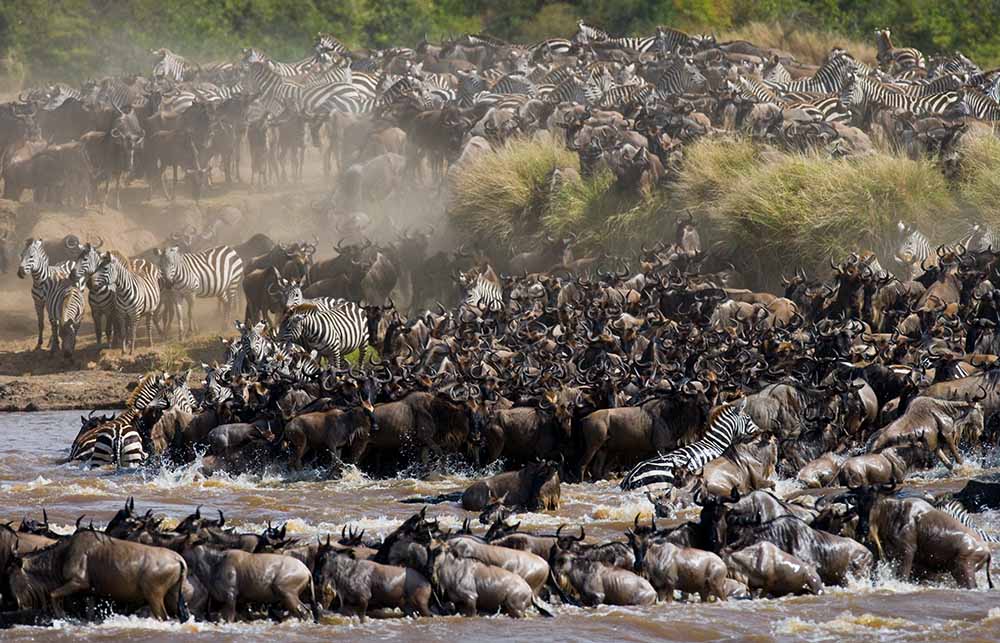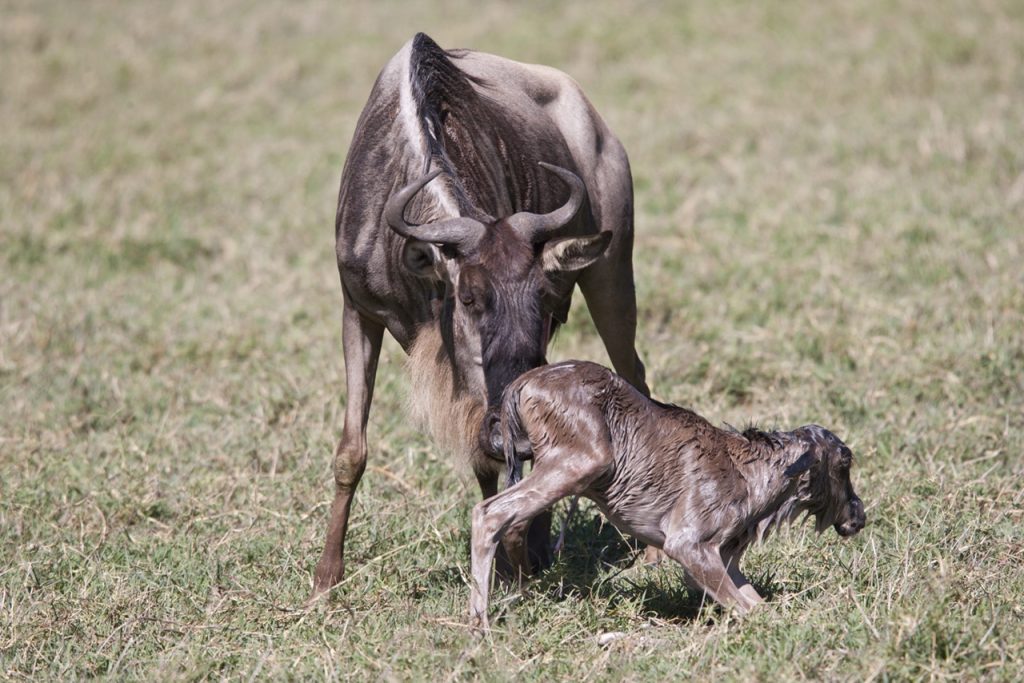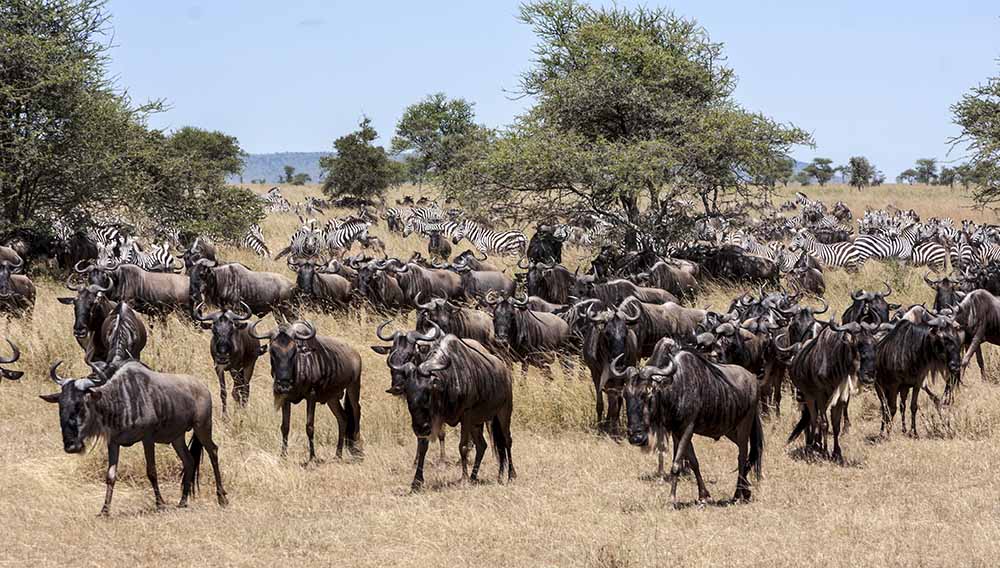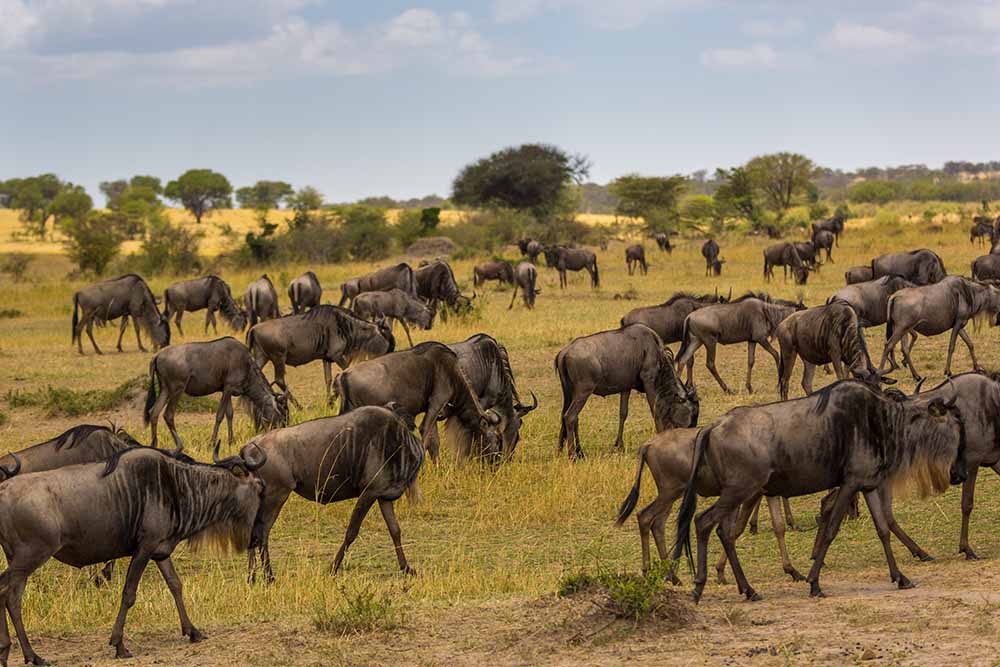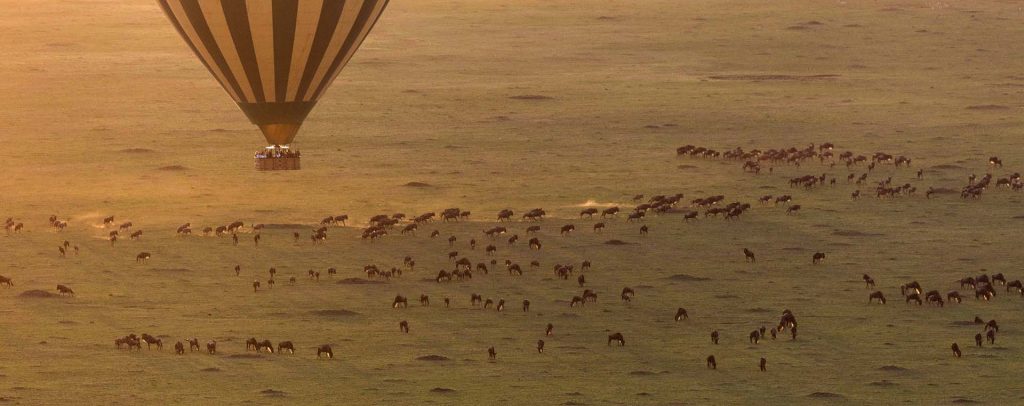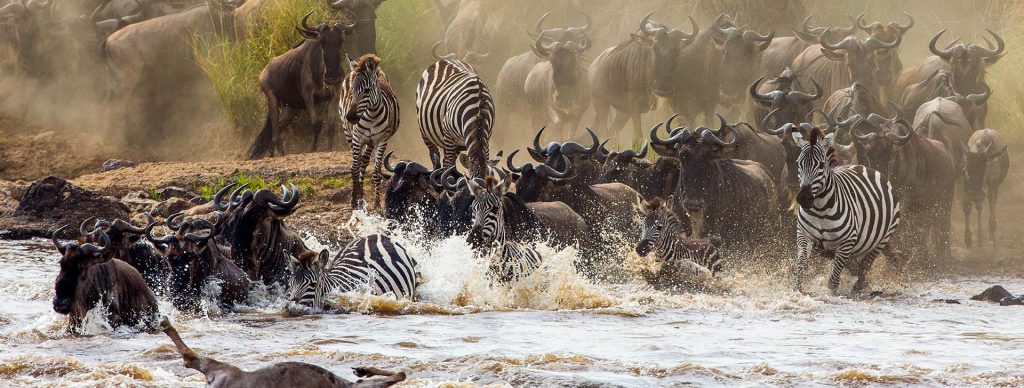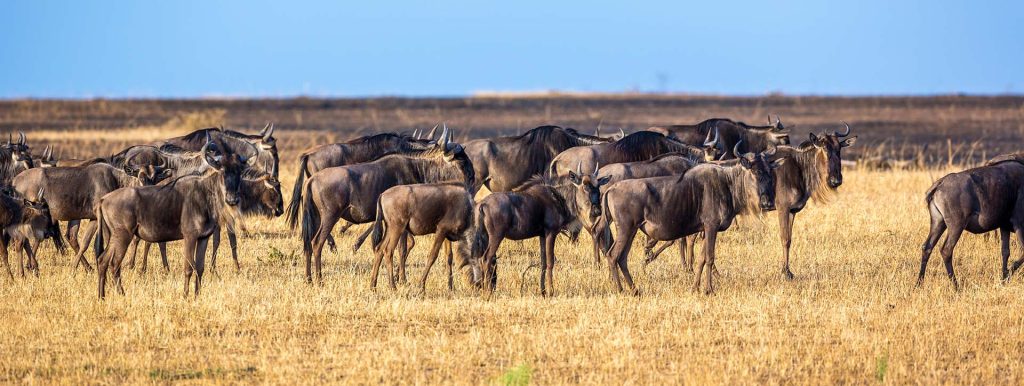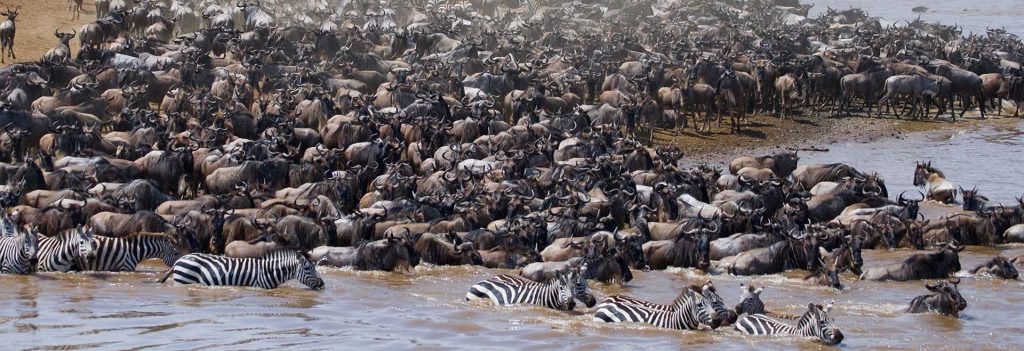Wildebeest’s migration of Maasai Mara
Masai Mara is also known for the high density of lions that it has and when the wildebeests cross to Masai Mara, they are hunted down by predators the big cats and this reduces the number of wildebeests that cross back to Serengeti.
During the Mara river crossing, the wildebeest migration involves a migration of over 1.5 million wildebeests and thousands of Thomson and grant’s gazelles and zebras during their way from Serengeti national park to the plains of Maasai Mara. The animals participating in the migration are said to migrate as they look for fresh grass and water, the Mara River crossing is the deadliest stage of the migration as the migrating herds enter the river infested by the deadly crocodiles. After crossing the river, the herds face off with the predators such as lions, leopards and cheetahs on the banks of the river. The whole grand event can be watched during Kenya wildlife.
By August, the herds have faced the challenge of crossing the Mara River and are spread throughout the Masai Mara’s northern region, with many remaining in the northern Serengeti. In years when the river is in full flow, the panic and confusion at the crossings — combined with waiting predators and surging currents — can cause massive loss of life. But, even in years of relatively gently flowing water, the crocs take their toll, not to mention the lions and other large predators that patrol the banks, ready to ambush any wildebeest that make it to the other side. There is no single crossing: at some spots, there are just a few individuals, while others see a mass of animals moving without break for hours.


